A villa that stands on a hill overlooking the Gulf of Tigullio and the town of Santa Margherita Ligure, which opens right below it, among palm trees and pine trees. A park where one rests among citrus plants, an Italianate garden and a romantic English-style woodland created in the early twentieth century on the hillside. A picture gallery that includes important works of the Genoese seventeenth century, of which the collection is a precious testimony. This is the ensemble that makes Villa Durazzo one of the most beautiful places in Liguria: a seventeenth-century aristocratic residence, which was later a hotel, a luxurious villa, and finally, today, a museum open to the public, but also a venue for events.
The beginning of the history of Villa Durazzo in Santa Margherita Ligure can be traced back to 1678, when the Durazzo family decided to build a summer residence here. The Durazzos were one of the most important noble families of Genoa, although their rise to the patriciate is more recent than that of families of older nobility such as the Spinola, the Doria, and the Grimaldi: the Durazzos were in fact originally from the eponymous Albanian city, from where at the end of the fourteenth century the known progenitor, Giorgio, had arrived as a refugee together with his wife and three children. Having become wealthy silk merchants within a century, they were enrolled in the Liber Nobilitatis of Genoa in 1528, with Giovanni Durazzo, and aggregated to the Albergo dei Grimaldi, that is, the respective consortium of noble families related to each other. And shortly thereafter, in 1573, they succeeded to the highest office in the Republic of Genoa, when Giacomo Grimaldi Durazzo became doge (in all, the family would give nine doges to the Republic). He never made it to the dogate, but it was nevertheless a distinguished member of the family, the diplomat Giovanni Luca Durazzo (Genoa, 1628 - 1679), eldest son of Gerolamo and Maria Chiavari and grandson of Giovanni Luca Chiavari, who was doge himself between 1627 and 1629. It was he who had the present Villa Durazzo built.
In 1664, Giovanni Luca had inherited from his father Gerolamo, who in turn had obtained it from the Chiavari family, again through hereditary means, a house with a tower that has been attested since 1609 on the site where Villa Durazzo now stands, and which was located within land that in ancient times had been the property of another important Genoese family, the Fieschi. Here, in even earlier times, was a castle that had defensive and sighting purposes, and which had been built in the 16th century as an outpost against barbarian raids. In 1678, Giovanni Luca decided to radically renovate the property, at a time when, together with his brother Eugenio Durazzo, he had initiated an intense activity of real estate investment: it will at least be necessary to recall how, in 1679, Eugenio bought the sumptuous Palazzo Balbi promoting major extension works (today the mansion is known as Palazzo Reale, having become the residence of the Savoys when Genoa came under the Kingdom of Sardinia), and is one of the largest and most important in the city, home to a rich museum. Work on the arrangement of the “palazzo che sua Signoria Ill.ma fa fabricare nel luogho di S.ta Margarita,” as we read in the first contract for the supply of limestone, began in January 1678. However, Giovanni Luca was not in time to see the villa finished, whose work was prolonged beyond measure (by the date of 1707 it was in fact not yet finished). In the end, the villa presented itself as a massive building with a square plan, structured on two noble floors each with a mezzanine, and mellowed on the outside by the angular ashlarwork that starts from the ground and reaches the cornice, by the cornices that frame all the windows, and by the corbels that run on the cornice and that we also find under the first-floor windows. On the facade, below the three central windows, we also observe a small balcony with marble pilasters, a sort of trademark of the sculptor Giovanni Pietro Orsolino, employed on the site (they are also found in the Royal Palace). The modules are those typical of seventeenth-century Genoa, although the compositional scheme, of Alessian taste (so much so that, until before the discovery of the documents with the dates, tradition attributed the design of the villa to Galeazzo Alessi), looked to the sixteenth century, in a surprising way as noted by the scholar Colette Bozzo Dufour, who devoted a dense monograph to Villa Durazzo: because it was a model dating back more than a century earlier.

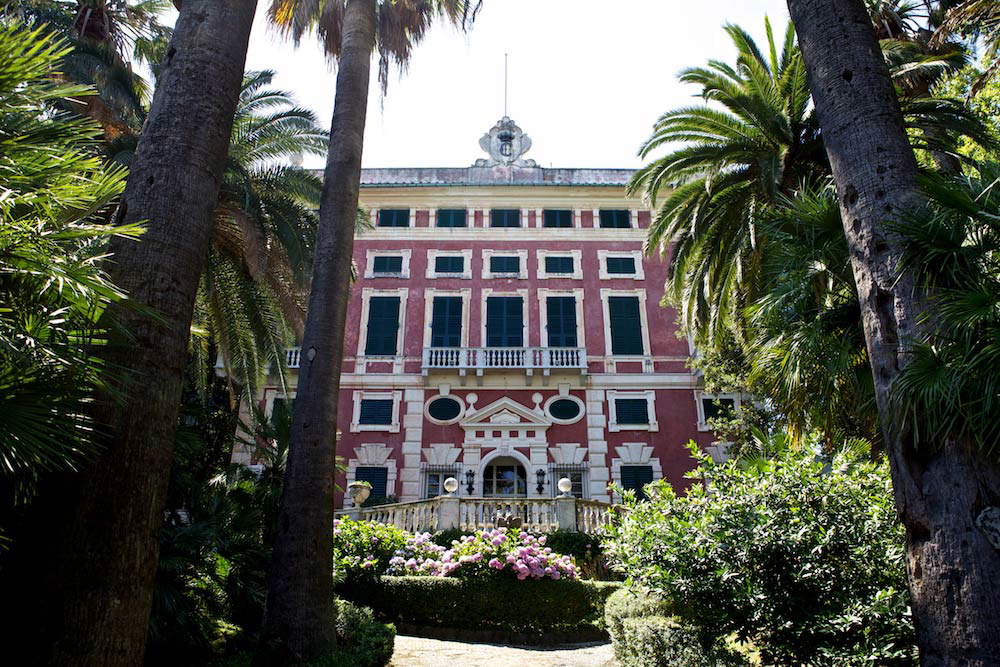
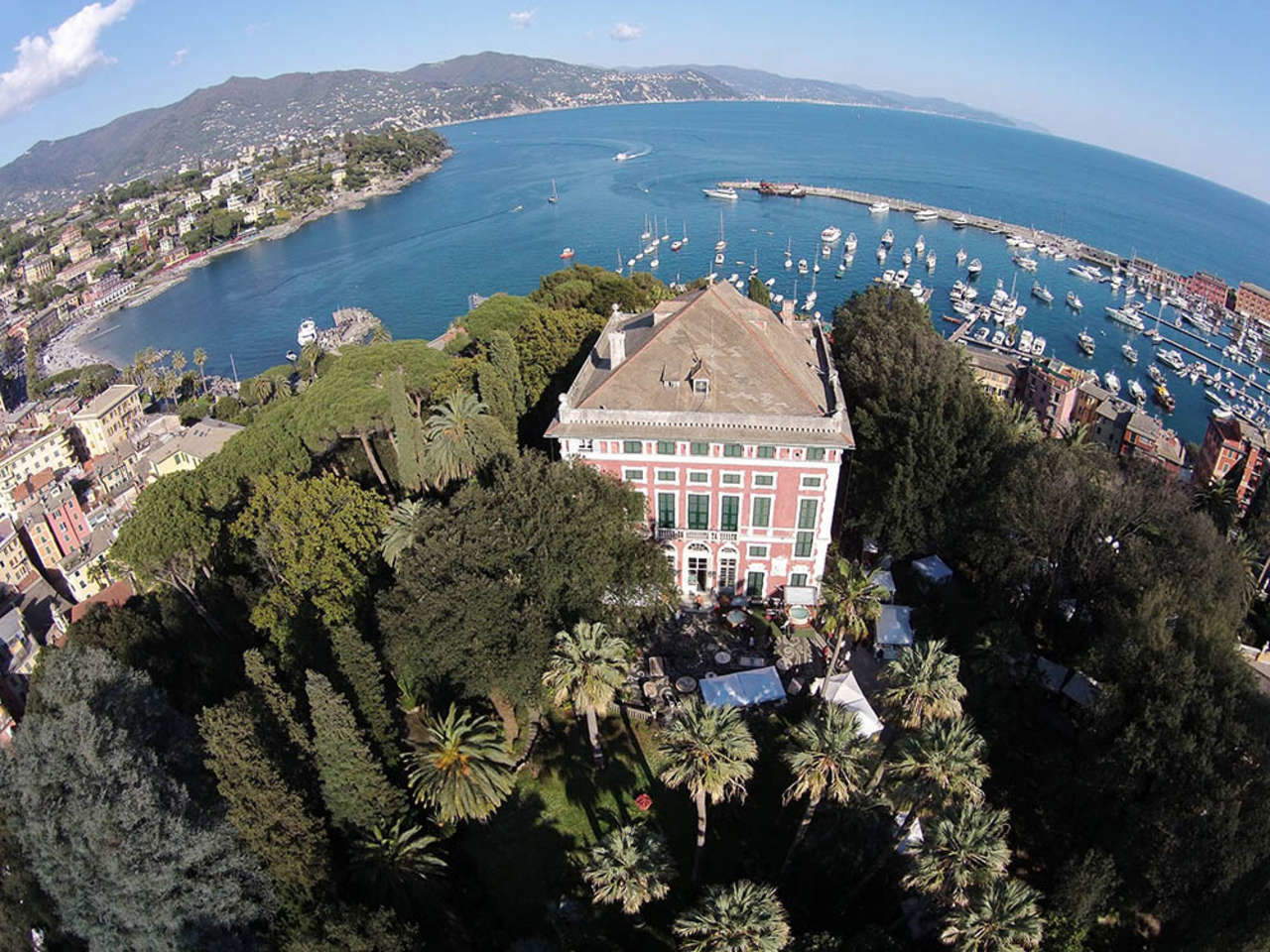

The villa had to be finished just in time for 1708, the year in which the Senate of the Republic of Genoa decreed the transfer to Santa Margherita Ligure of the foreign exchange fairs that had previously been held in Sestri Levante: these were fairs, usually organized four times a year, in which credit was marketed, and in which the Durazzo family regularly participated with their agents. In this context, Bozzo Dufour points out, “the Villa assumed an even greater representative role, which resulted in a further enrichment of valuable furnishings.” The Durazzo family’s season was short-lived, however, since by the second half of the 18th century the mansion had already been abandoned by the family: thus, in 1821, Marquis Marcello Durazzo sold the villa to Giovanni Battista Centurione Scotto, whose family held ownership of the building until 1919. The Villa Durazzo we see today is essentially the result of the interventions of the two families. It is also true of the important picture gallery: no inventories have yet been discovered that could attribute the individual works in it to the Durazzo or Centurione families, but by reconstructing the history of some of the pieces, it has been possible to shed a little light at least on the vicissitudes of some of the most important works.
The visitor begins his itinerary from the atrium, which has a particularly original layout, since it is divided into two parts, with a landing accessed by climbing five slate steps: an expedient designed to make the room more scenic, whose conformation, similar to that of a stage, made it an ideal venue for concerts that are still held there. On the walls, near the large wooden chests in the Genoese style, with large backs bearing the Centurione coat of arms, we find four portraits, one of which, a Lady with a Fan, is the work of Nicolò Maria Vaccaro (Genoa, c. 1659 - Madrid, 1720), and is one of his most important canvases, a reflection of the Vandyckian culture, filtered through the inspiration of Giovanni Bernardo Carbone. Vandyckian culture that in the last decade of the 17th century, the period to which the painting dates, was still fashionable in Genoa. Two other rooms are visited on the first floor: the first is the Vietri Drawing Room, which stands out for its beautiful 18th-century Neapolitan majolica floor (hence the name of the room, which in ancient times was used as a dining room), and for the Romantic-style lunettes by the Sammargherite painter Giovanni Franceschetti, who had worked in the villa in the early 20th century at the behest of Giulio Centurione, whose friend he was. We also find there a copy of Raphael’s St. George preserved in Washington. The second is the Vaymer Room, so named for the four eighteenth-century paintings by Giovanni Enrico Vaymer (Genoa, 1665 - 1738) hanging on the walls: these are portraits of three members of the Centurione family (Charles II, the great-grandfather of the Giovanni Battista who bought the villa, his wife Francesca Spinola with their daughter Giulia, and another portrait of Giulia as Cleopatra), as well as a portrait of a lady.
One then ascends the grand slate staircase, at the end of which is a gallery where one notices a marble bust of Giovanni Luca Durazzo, attributed to the school of Bernini. Before reaching the upper floor, however, one enters the mezzanine level where the Vittorio G. Rossi Room is located, dedicated to the journalist, born in Santa Margherita in 1898, who donated his studio (reconstructed in one of the two parts into which the room is divided) and his collection of memorabilia and works of art to the City of Santa Margherita Ligure, which decided to set it up here. In addition, the room also preserves his novels (including 1929’s The Sea Witches, inspired by his experience as a pilot of a MAS, torpedo-armed speedboat, during World War I) and the magazines where his articles came out.



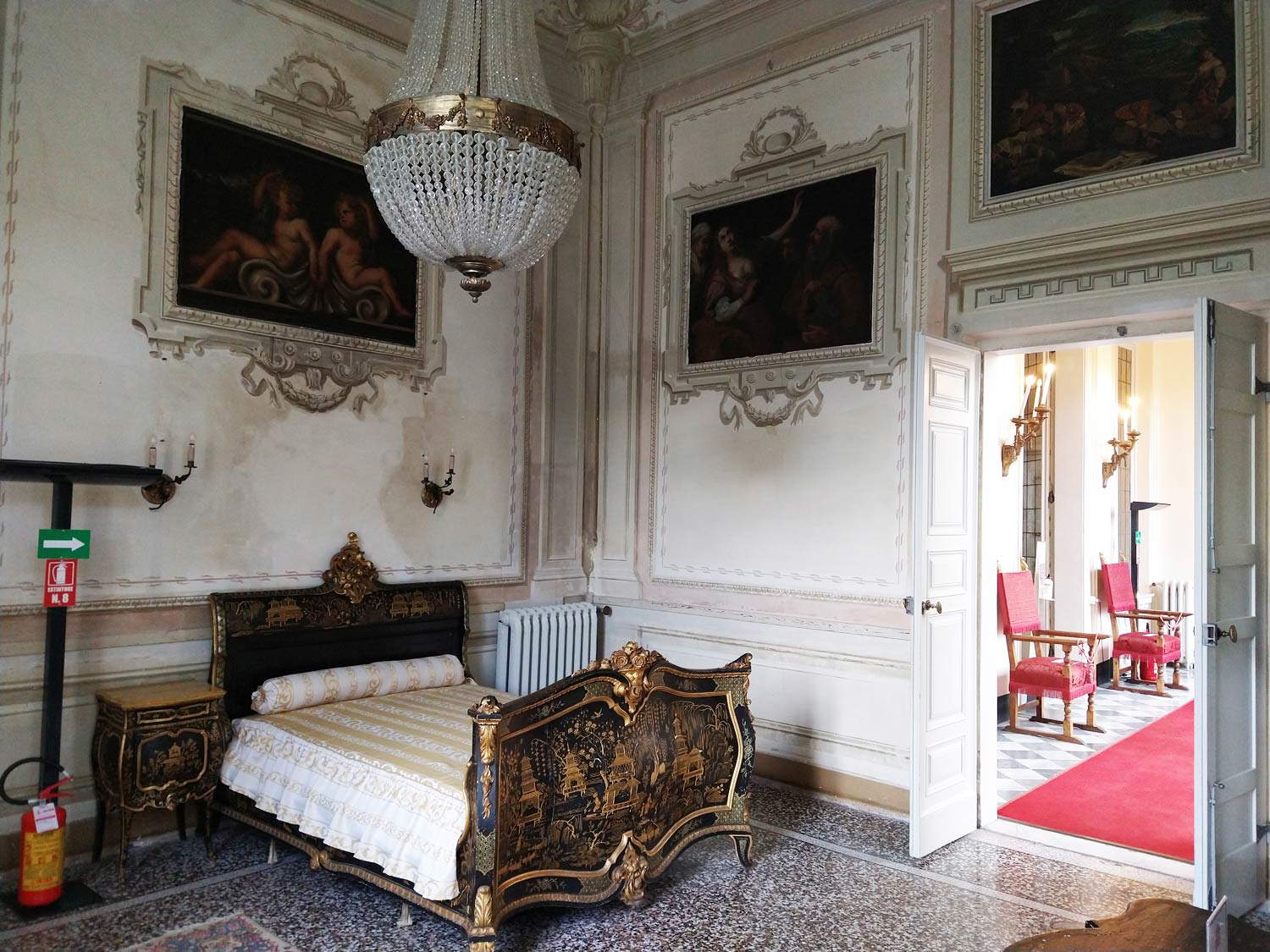
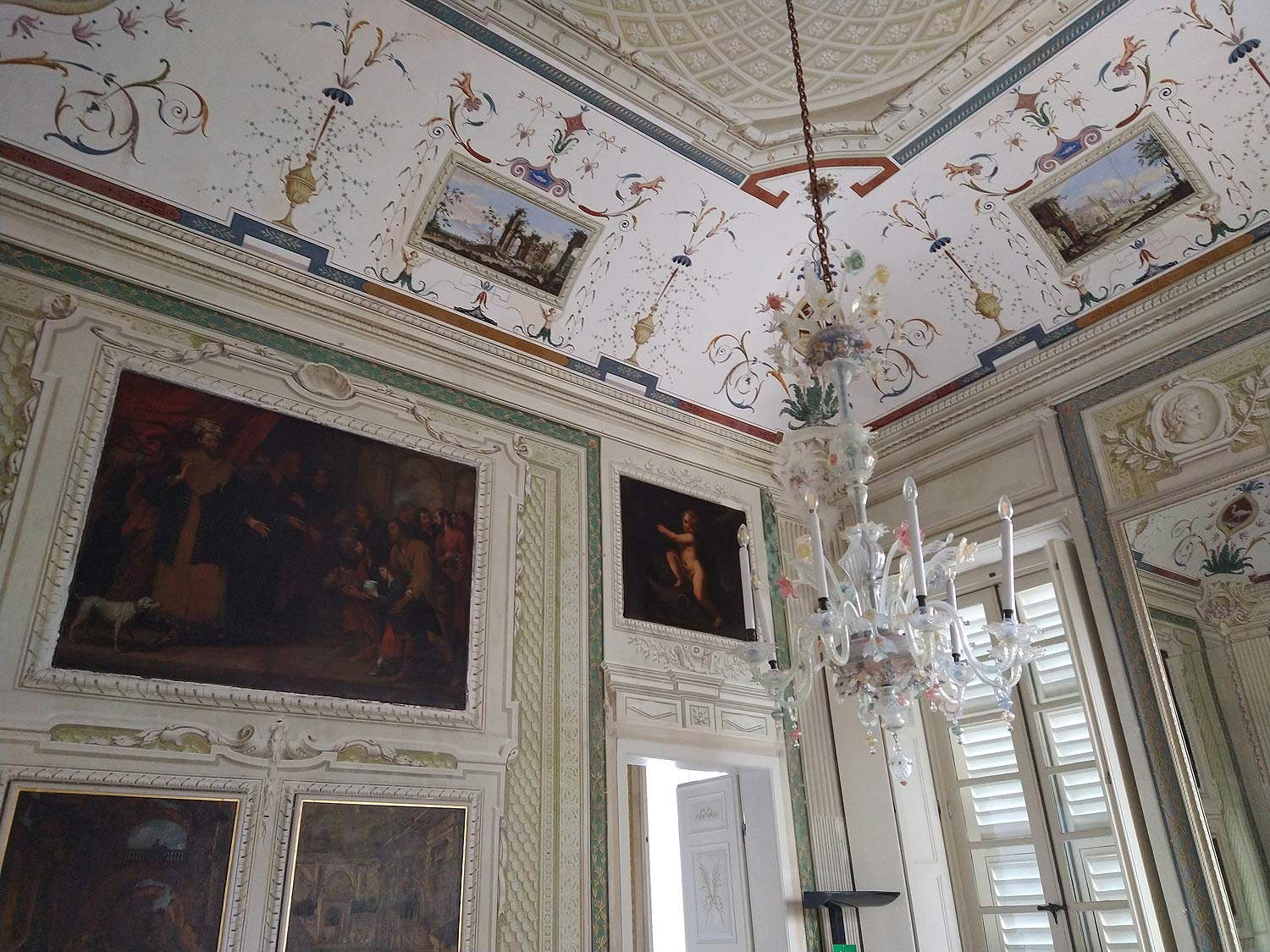
 The
The The
The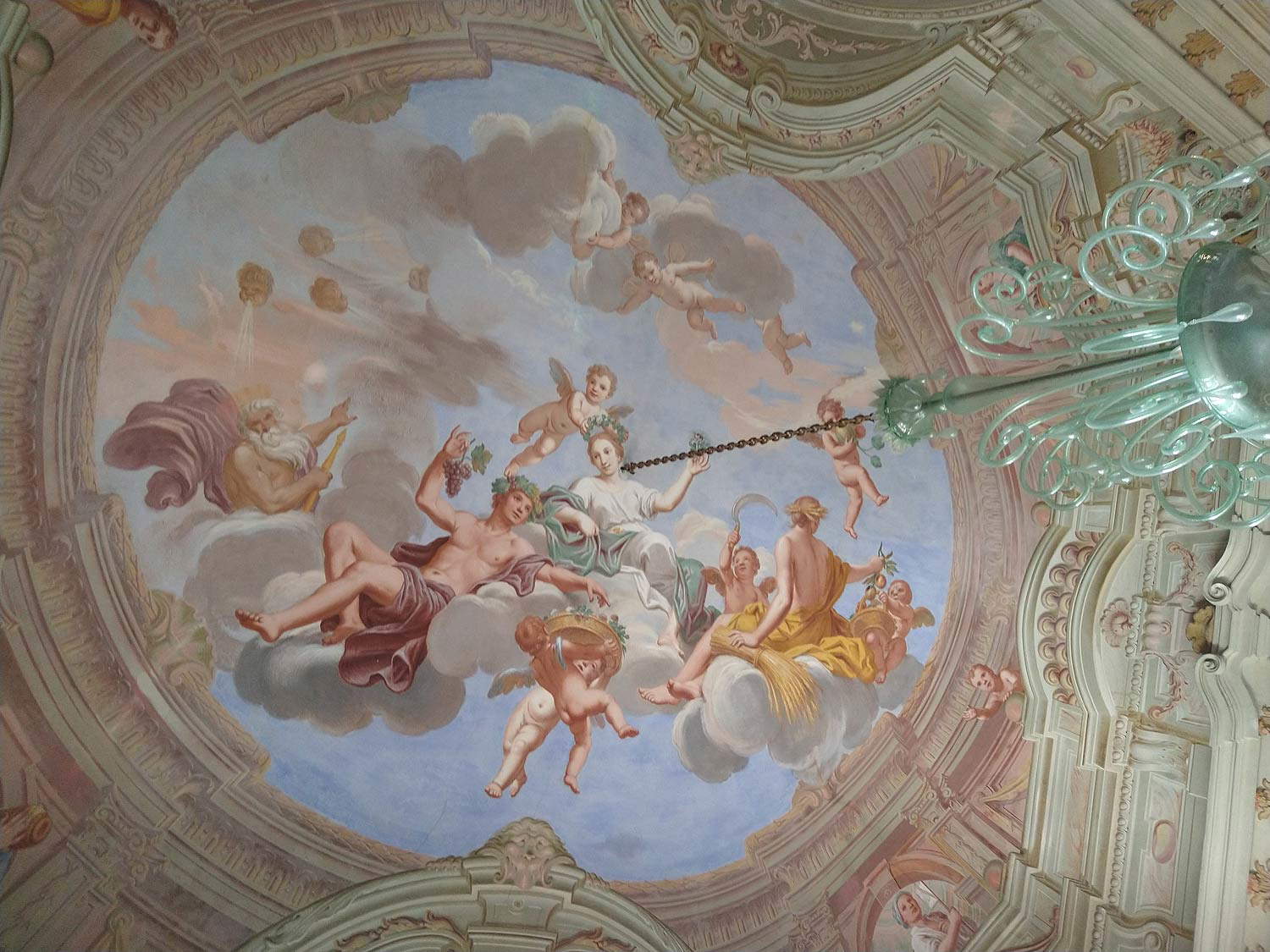

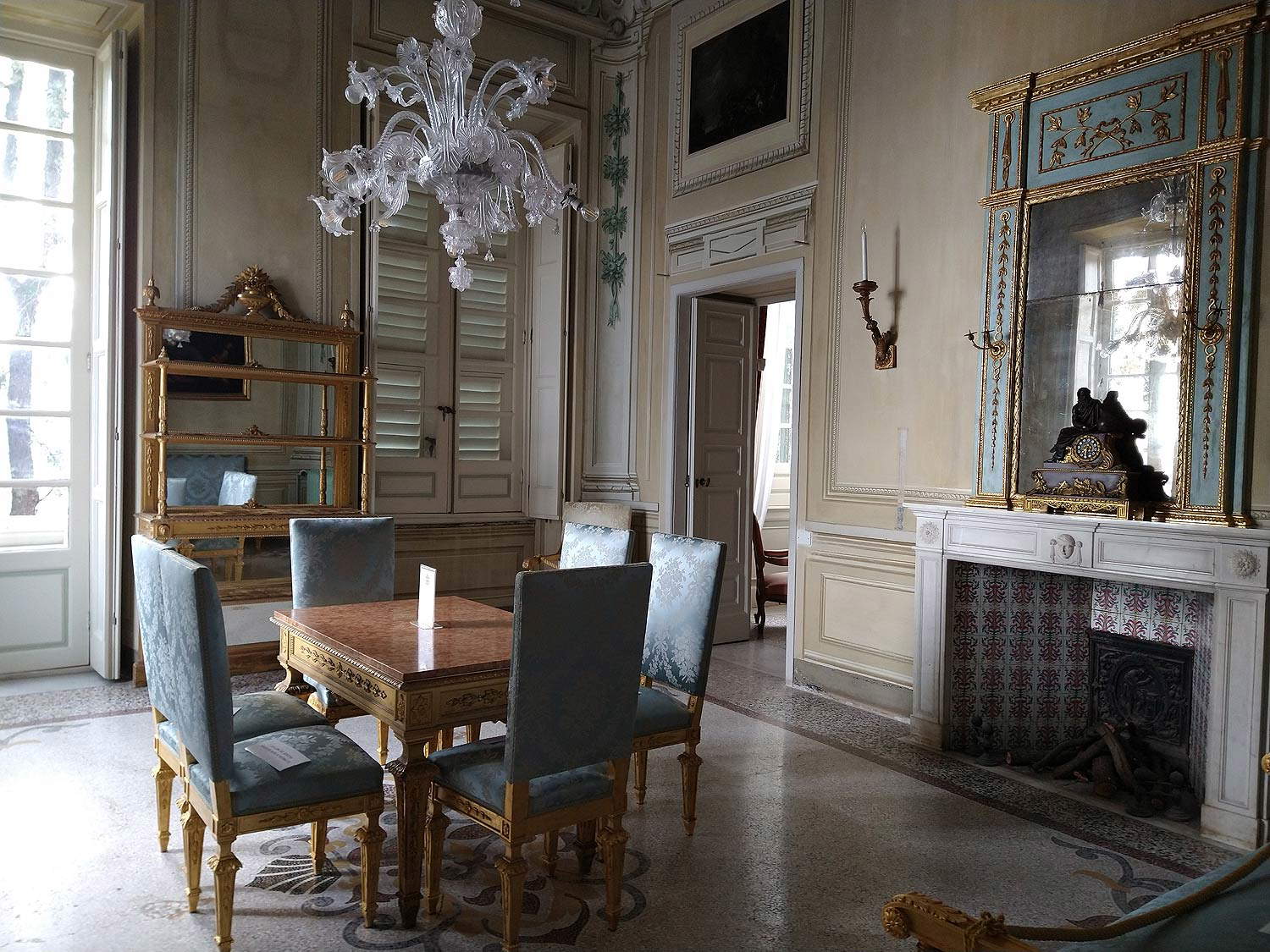
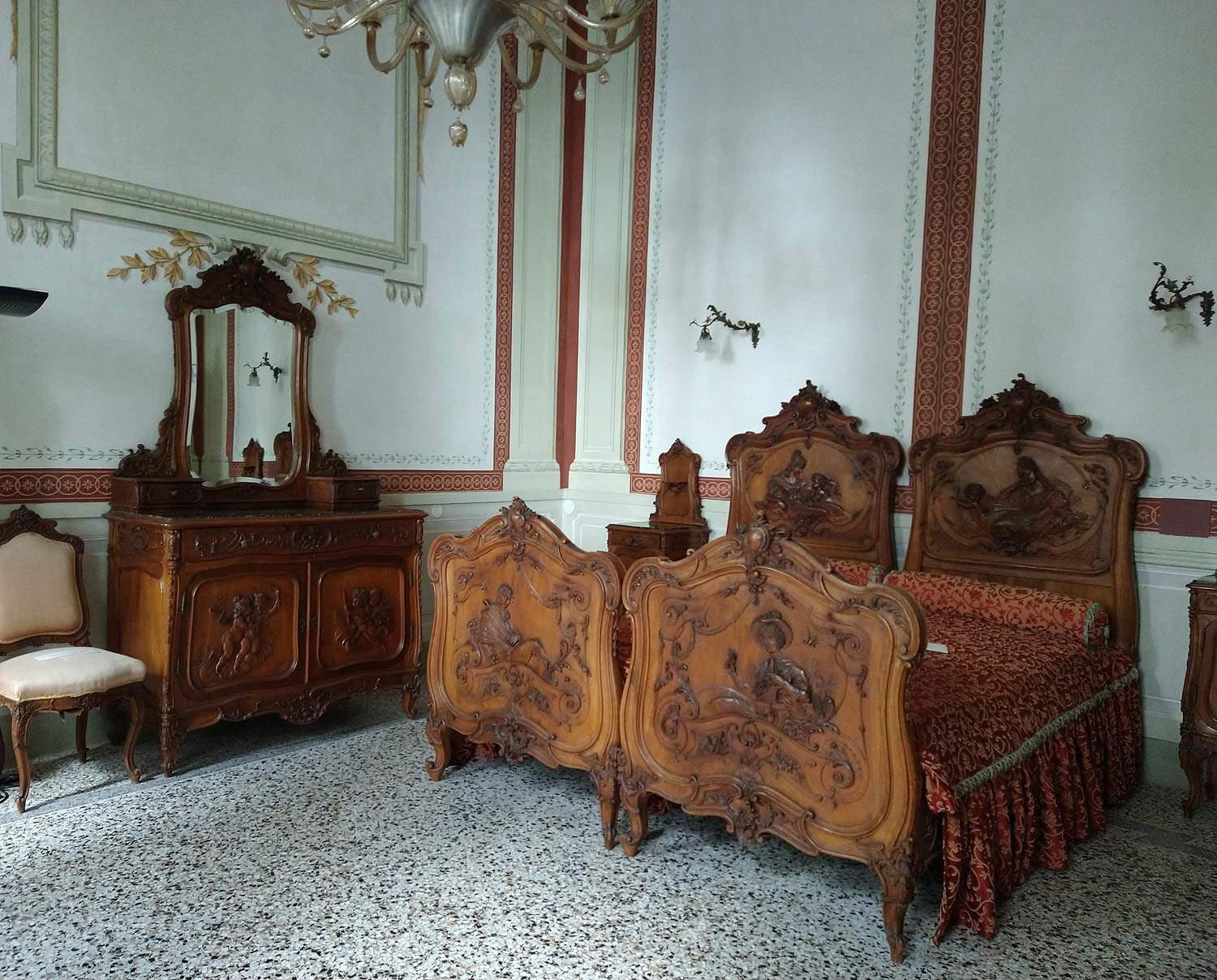
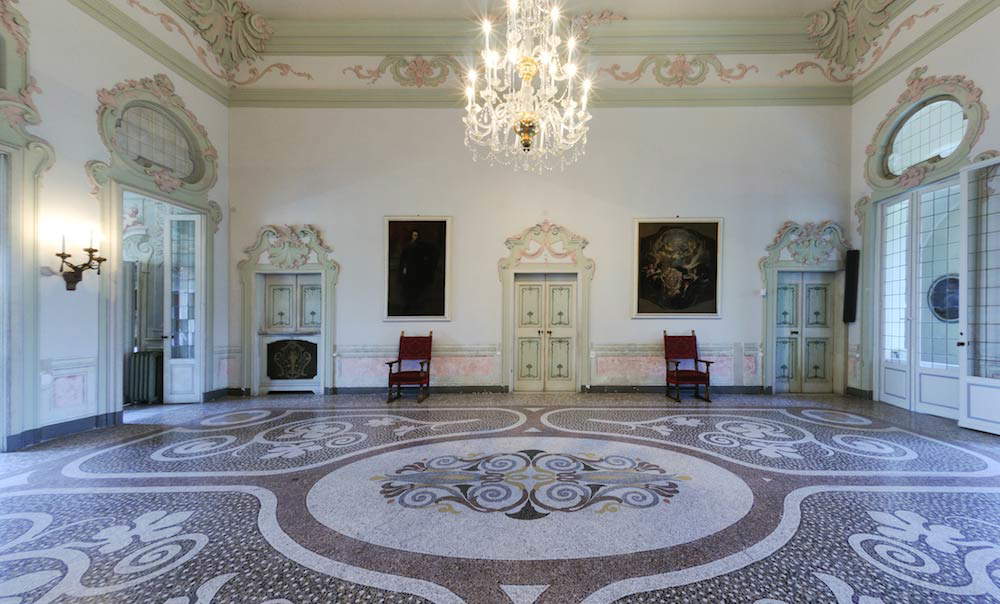
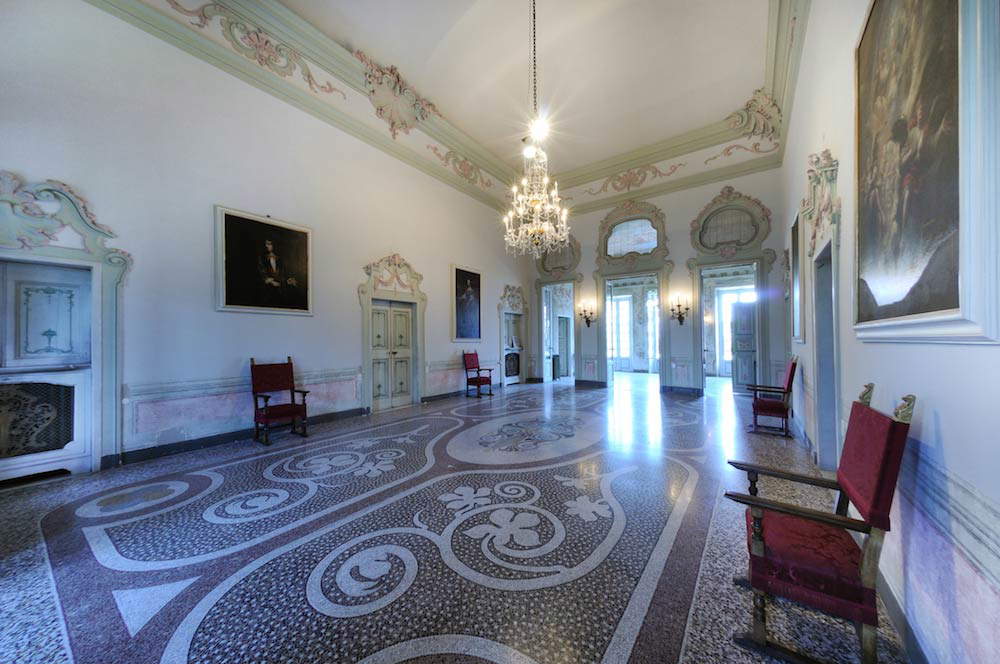
On the piano nobile, the visit begins with the Venetian Room, a bedroom furnished mostly with 20th-century chinoiserie, but where some of Villa Durazzo’s most interesting paintings are to be found. This is the case of a 16th-century Saint Lucia of the Emilian school, the oldest painting in the villa, and especially of the two Amorini reggi festo by Domenico Piola (Genoa, 1628 - 1703), as well as of the two 17th-century paintings by Luciano Borzone (Genoa, 1590 - 1645) referable to the Durazzo commission and depicting the Death of Cleopatra and the Death of Lucretia, conceived as pendants, “late works of the master,” as art historian Francesca Fabbri writes. Borzone, writes the scholar, “echoes here the much-admired Caravaggesque structures, especially in the details of the old woman with her head covered and the bystanders with their mouths half-closed; the vibrant coloring, for which Borzone’s canvases were greatly appreciated, is found again, despite a thin and light drafting, in Lucretia’s dress, made with quick touches of pictorial matter.” Interestingly, Fabbri notes, Borzone chose two heroines from antiquity, since the exaltation of female virtues was intended to celebrate “the Republic of Genoa, its virtue and its independence.” The next Music Salon has a piano at its center, surrounded by 19th-century pieces of furniture and 17th-century paintings: here then is a Triumph of Flora by an unknown Venetian painter, a St. Catherine by an Emilian artist, two paintings from the Bassano school depicting Spring andSummer, and another of the highest quality pieces, theEcce Homo by Giovanni Battista Paggi (Genoa, 1554 - 1627), “beautiful” as Fabbri rightly defines it, but unfortunately curtailed in the lower part (“the monumental theatricality of the canvas,” writes the scholar, “nothing detracts from themotivity of the theme: a cadenced and almost silent rhythm invests the sequence of faces and directs the gaze along the diagonals made of the characters’ gestures and from the plane of the balustrade, where the artist affixed his signature. Unopera magistrale, to be placed at the beginning of the seventeenth century for the skillful light passages and for the updating, now fully accomplished, on Florentine and Emilian culture.”). It is, moreover, probable that in the figure of Pilate the artist wished to depict a contemporary character, since the reflectographs carried out during the restoration of the canvas, one of the most valuable in Villa Durazzo, found the presence of a lace collar and a buttoned jacket, seventeenth-century clothing.
Continuing on, one encounters the Salotto delle Grottesche, which owes its name to its decorations: here, around the fine polychrome Murano glass chandelier that stands out in the center of the room, are four Amorini by Domenico Piola, which like the other two preserved in the Venetian Room represent five fragments of a painted frieze that most likely decorated the cornice of a room. The room then hosts some landscapes from the workshop of the De Wael, token Flemish artists active in seventeenth-century Genoa, and a Joseph refusing the gifts of his brothers by Giovanni Andrea De Ferrari (Genoa, 1598 1669), a masterpiece of Baroque theatricality and drama, painted around 1640. We then come to the Belvedere Hall, which overlooks the sea and was once a loggia. The ceiling is decorated with theAllegory of the Four Seasons, while on the left wall is a small frescoed chapel, at the center of which is an early 18th-century Crucifixion. A plaque on the hall recalls that in 1976 Villa Durazzo was visited by Karol Wojtyła, the future Pope John Paul II.
After pausing to admire the view of the gulf, we resume our tour and arrive in the Salotto del Camino, characterized by a grotesque ceiling by Giovanni Franceschetti and especially by the majolica-tiled fireplace bearing a bas-relief of the god Vulcan in the center. There we also find two battle scenes by Cornelis de Wael (Antwerp, 1592 - Rome, 1667), testifying to how much the Flemish was in demand by 17th-century Genoese patrons. From here, one then enters the Camera Umbertina, also known as the Queen’s Room: lovers of the romantic chronicle cannot help but notice that the room owes its name to the fact that Queen Margherita stayed here as a guest in 1904. On the walls here instead is a Ballad of Peasants by Cornelis and Lucas de Wael and a Coastal Landscape with Ruin by a follower of Antonio Travi, a work from the 1760s. The tour ends in the Hall of the Stuccoes, the largest room in the palace, lit by a large crystal chandelier in the Louis XVI style, and so called because of the decorations that adorn it on all sides. The walls display a beautiful Coronation of the Virgin, a work from the second half of the 18th century, and three portraits, including a Lady with a parrot that has been likened to the manner of Giovanni Bernardo Carbone, and a portrait of Francesco Maria Centurione in chamber dress, by the workshop of Vaymer.

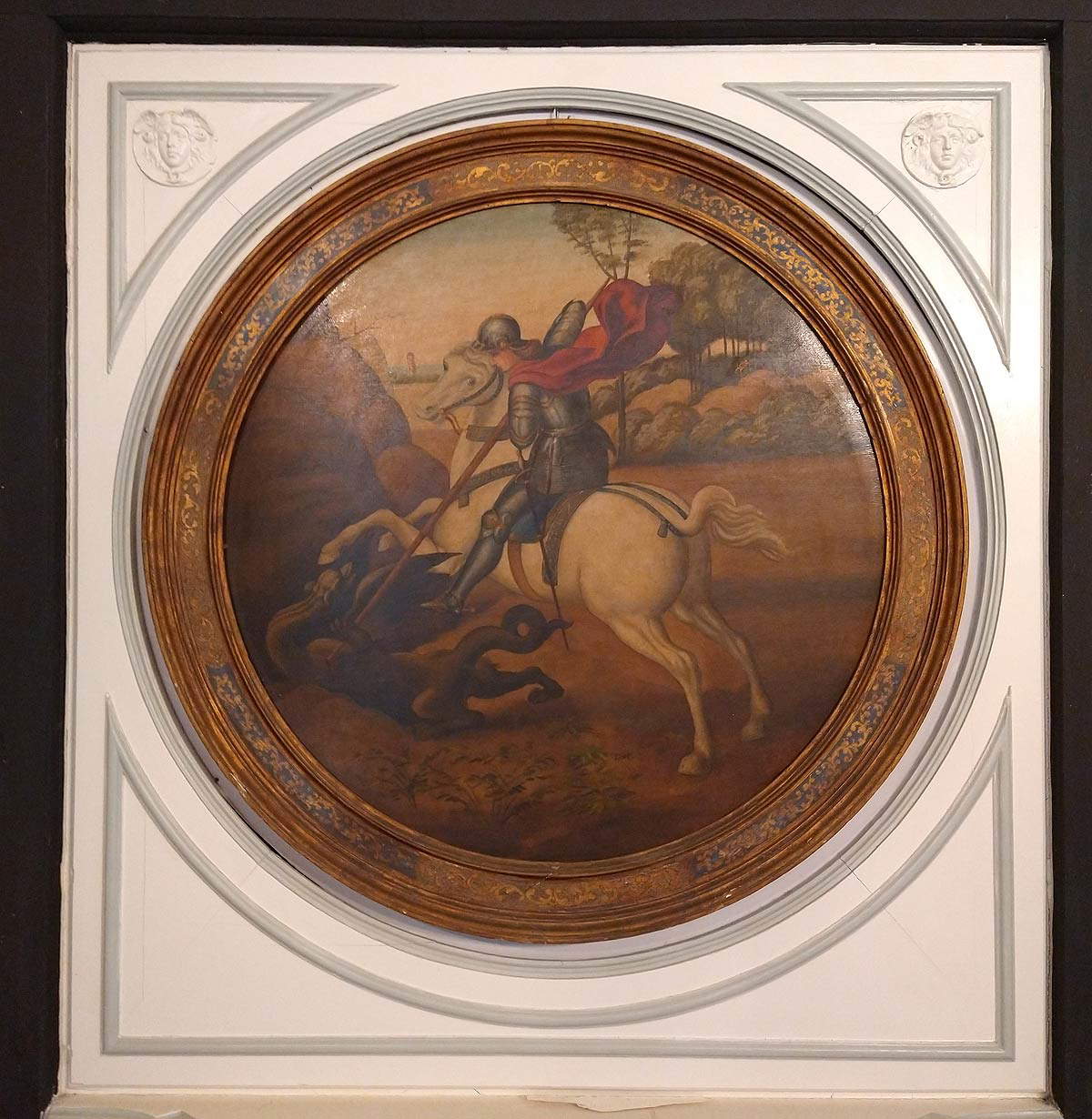
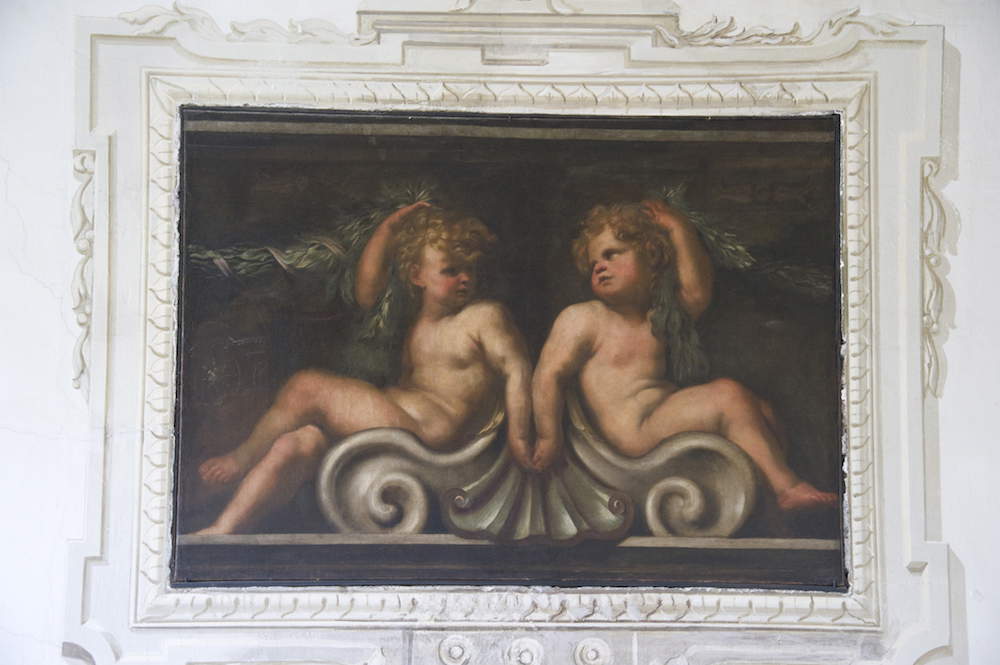
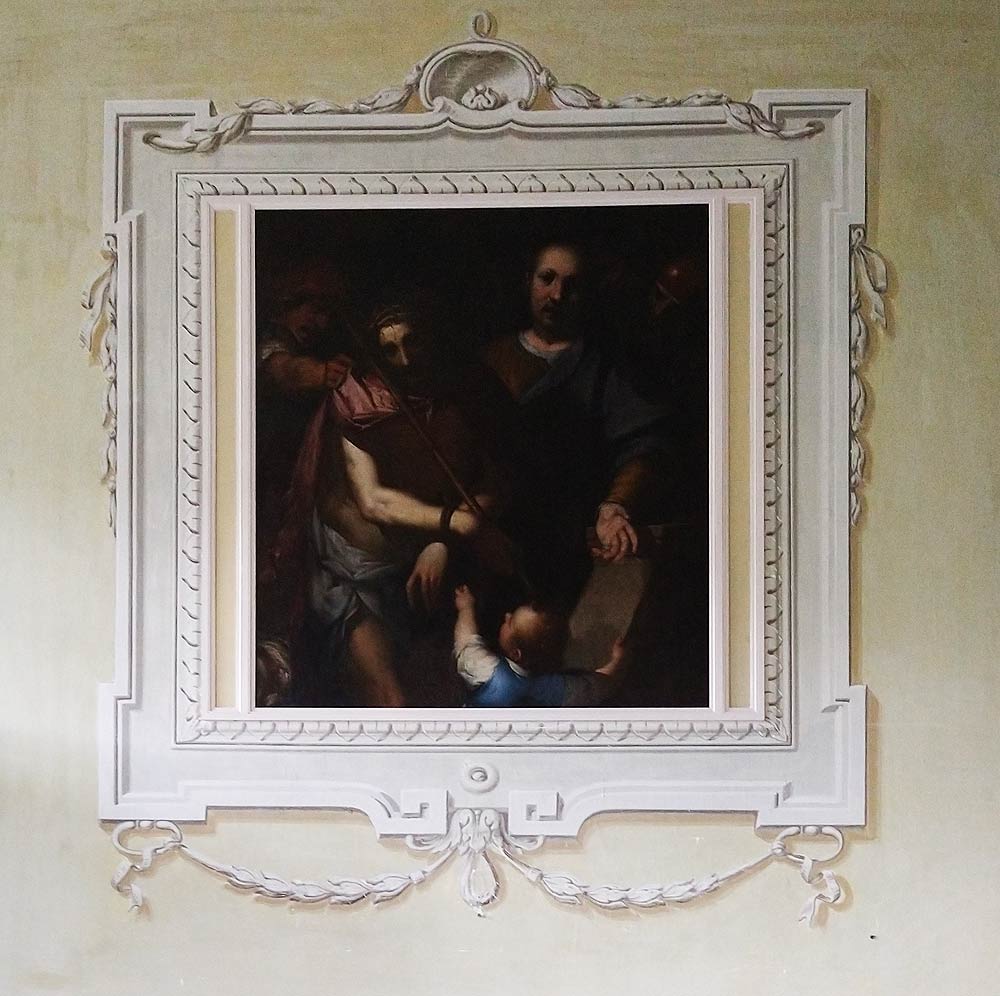
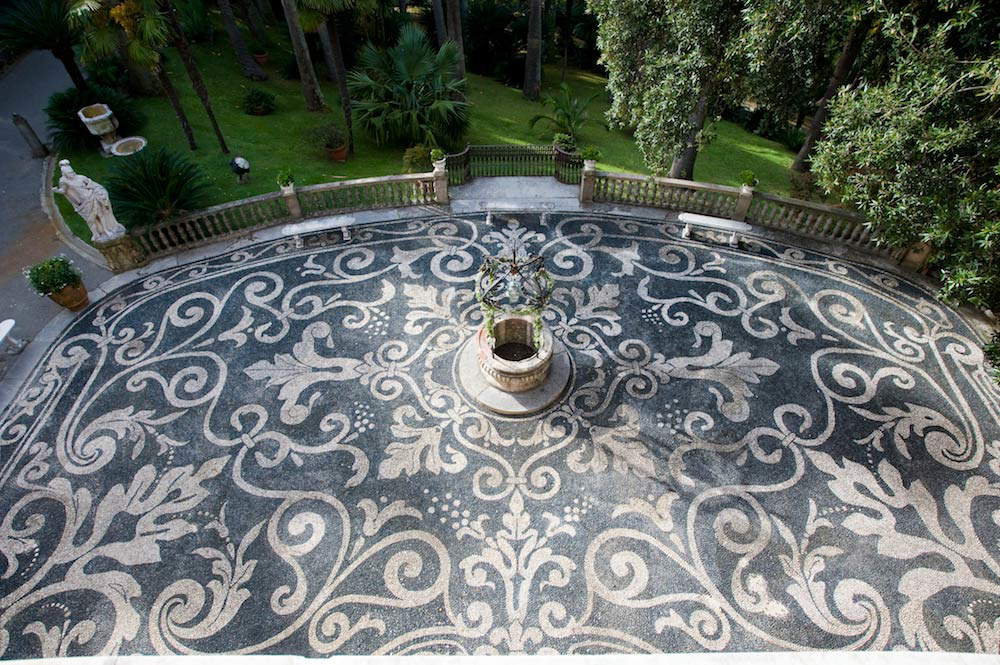
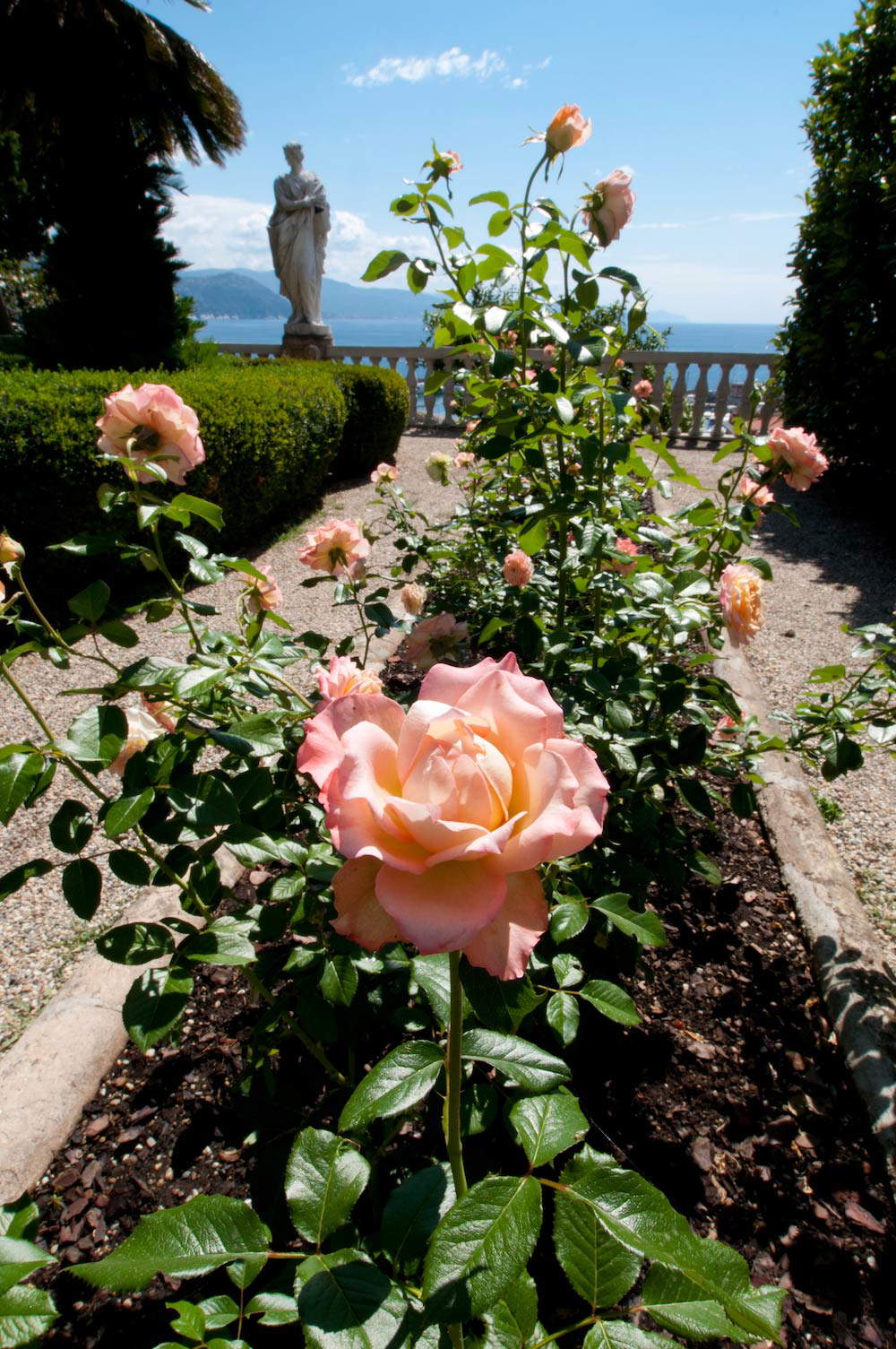
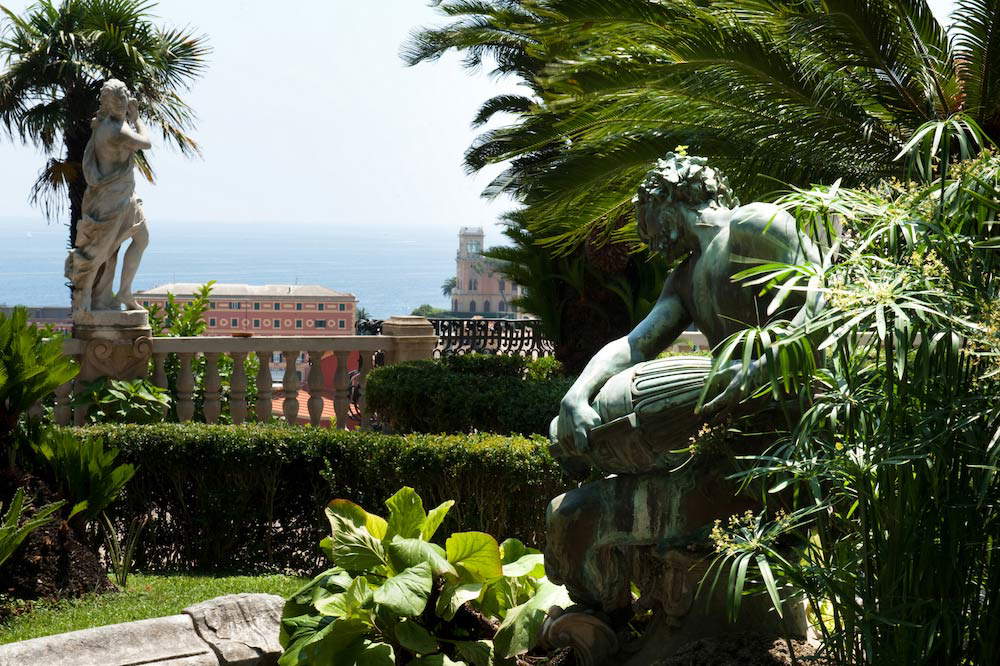
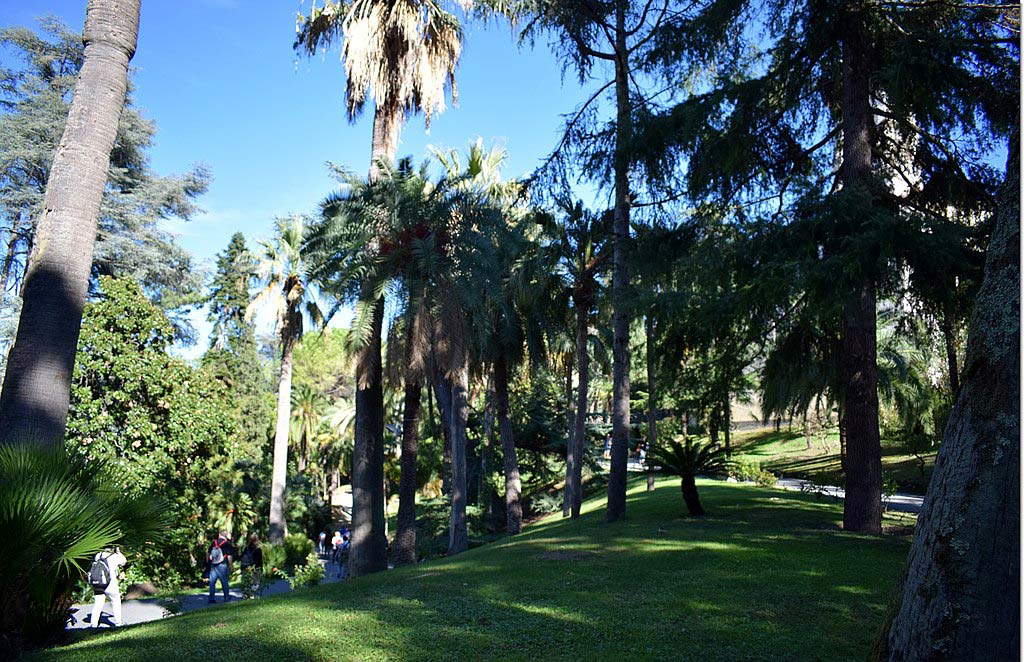
One exits the Villa and, after admiring the surrounding risseu, or black and white cobblestone pavement, made of sea or river stones and typical of the residences of Liguria (but also found in several squares in villages and cities), one lingers in the lush and luxuriant park, although today it looks very different from how it must have appeared in the eyes of the Durazzo family, to whom, however, dates the creation of thecitrus grove that occupies the splendid terrace overlooking the sea and that welcomed, and still welcomes, visitors who come to the villa coming up from the sea: orange, lemon and grapefruit trees are the plants that enliven this green corner. On the other hand, we owe to the Centurions the opening of the Italian-style garden that faces the villa, surrounding it with box hedges, cycas and fragrant rose bushes, and which we imagine to be a favorite leisure area for the guests of thehotel that opened its doors right inside the building at the end of the 19th century. In 1890, in fact, abetted by the election of Santa Margherita Ligure as a destination for sophisticated international tourism, Giulio Centurione, the last member of the family that had uninterruptedly inhabited the villa up to that time, decided to give the mansion under management to the Maragliano family, active in the hotel business: thus opened the Grand Hotel of Santa Margherita Ligure, and such it remained until 1910. In 1919, the Centurione family, burdened with financial difficulties, decided to sell the villa to the industrialist Alfredo Chierichetti, who made it his home, commissioned the painter Giovanni Fraschetti to restore the interiors that had been ruined since 1910 (the decorations of the Salotto delle Grottesche, for example, are due to his interventions), and opened the romantic forest that today you can cross, with a pleasant walk, if you decide to arrive at Villa Durazzo starting from Via Centurione. Here, large trees, including holm oaks, pines, cypresses, lindens, and palm trees of different types, accompany visitors on their ascent to the villa.
Three different declinations of the park that almost seem to emphasize the three different and distinct phases of the villa’s history. On the other hand, the fourth, the most recent, begins in 1973, the year in which the City of Santa Margherita Ligure purchased Villa Durazzo from the Chierichetti family. The ancient residence of the nobles of seventeenth-century Genoa Superba was arranged and refurbished (the creation of the Vittorio Rossi Room mentioned above dates back to 1978), and then opened to the public who love art and greenery (since 2005 it has been included in the Great Gardens circuit), as well as to ceremonies and receptions, bearing witness to how this sumptuous residence is still alive today, as it was at the time when it hosted the receptions of the families who lived here in ancient times.
Warning: the translation into English of the original Italian article was created using automatic tools. We undertake to review all articles, but we do not guarantee the total absence of inaccuracies in the translation due to the program. You can find the original by clicking on the ITA button. If you find any mistake,please contact us.